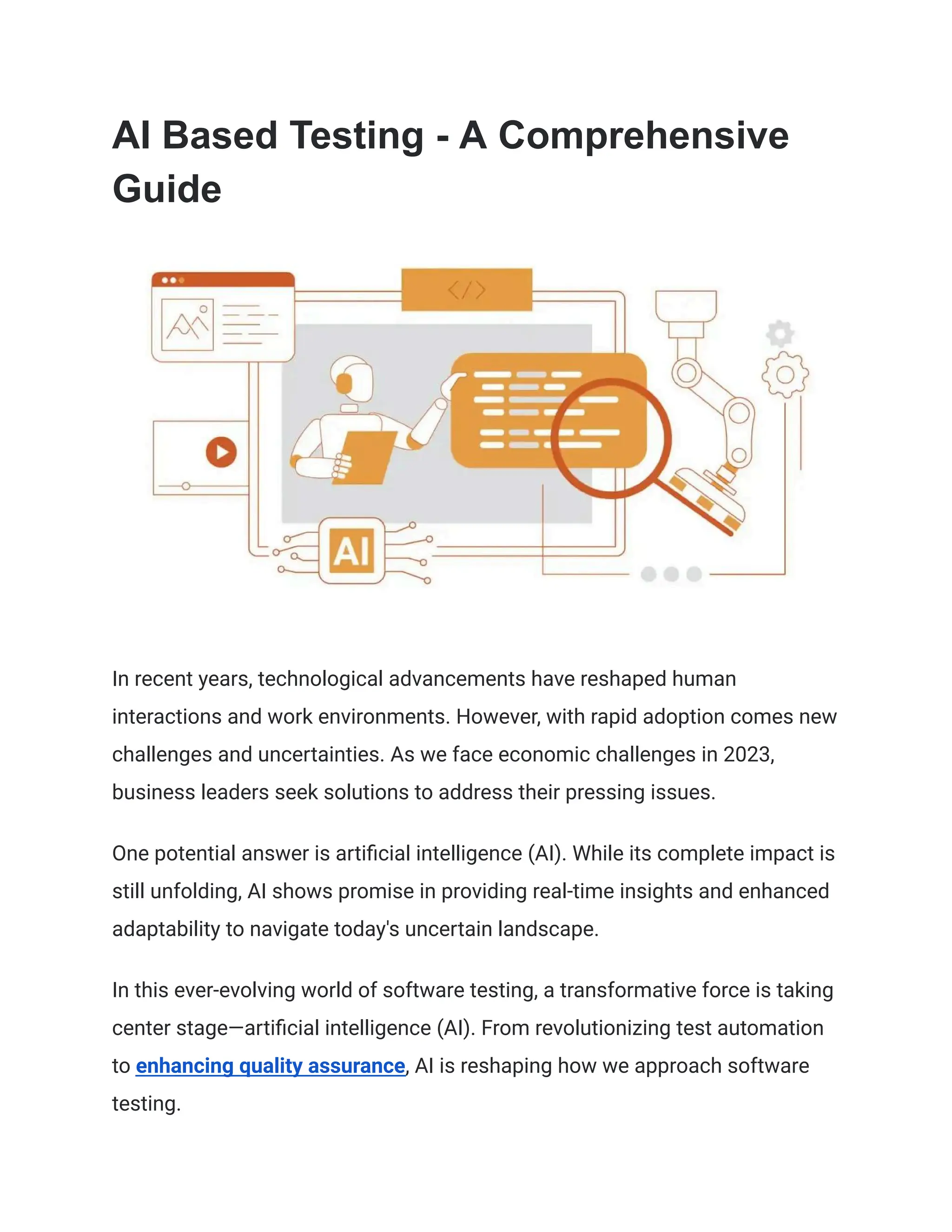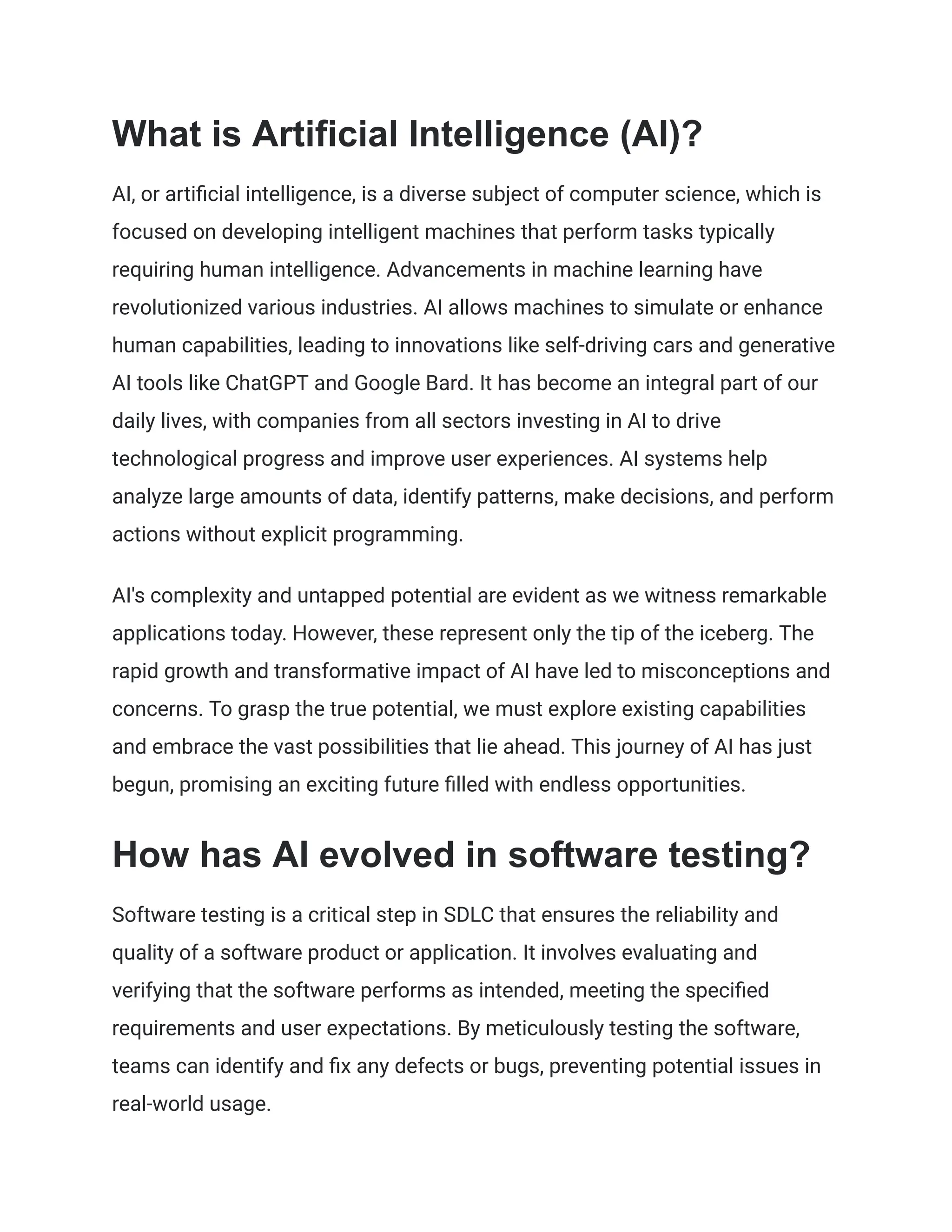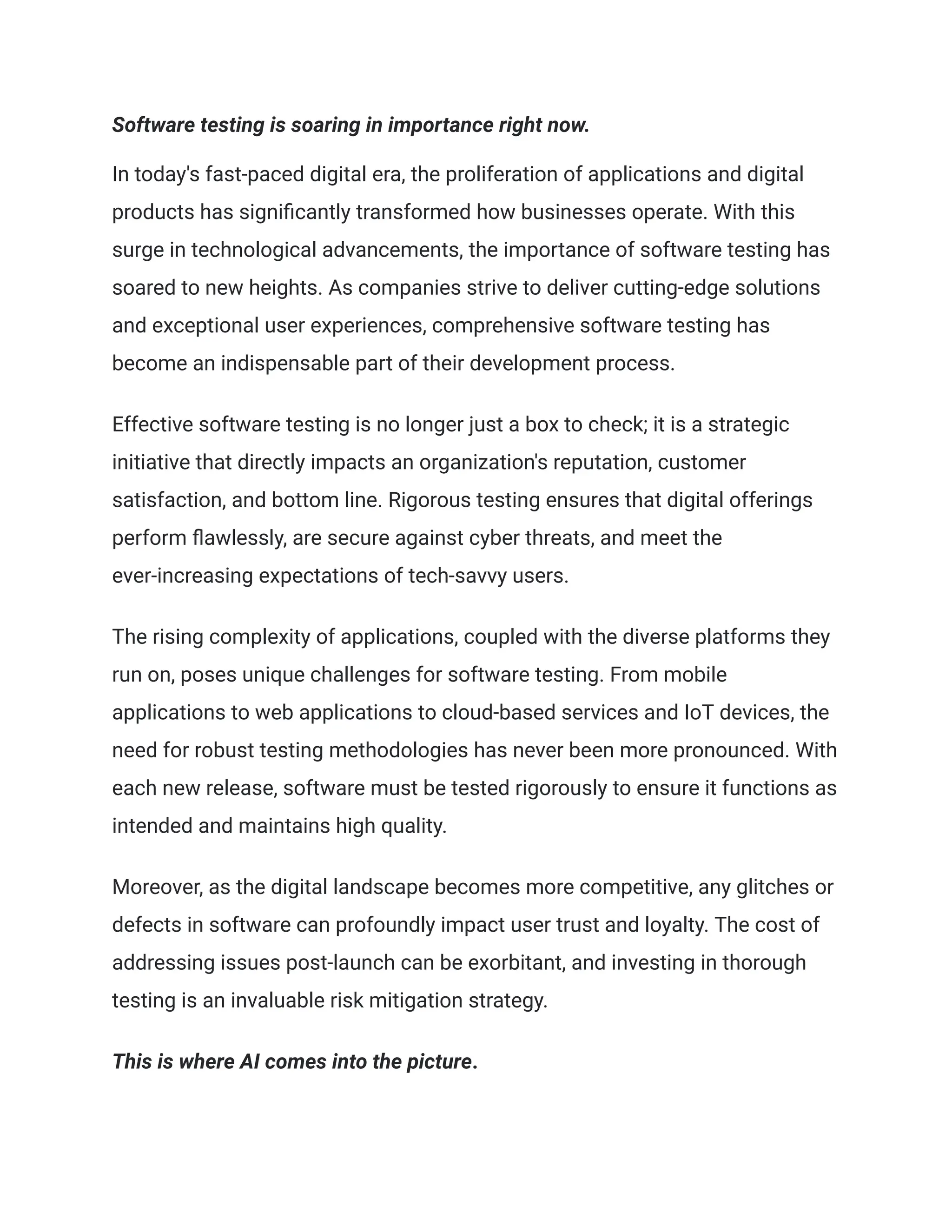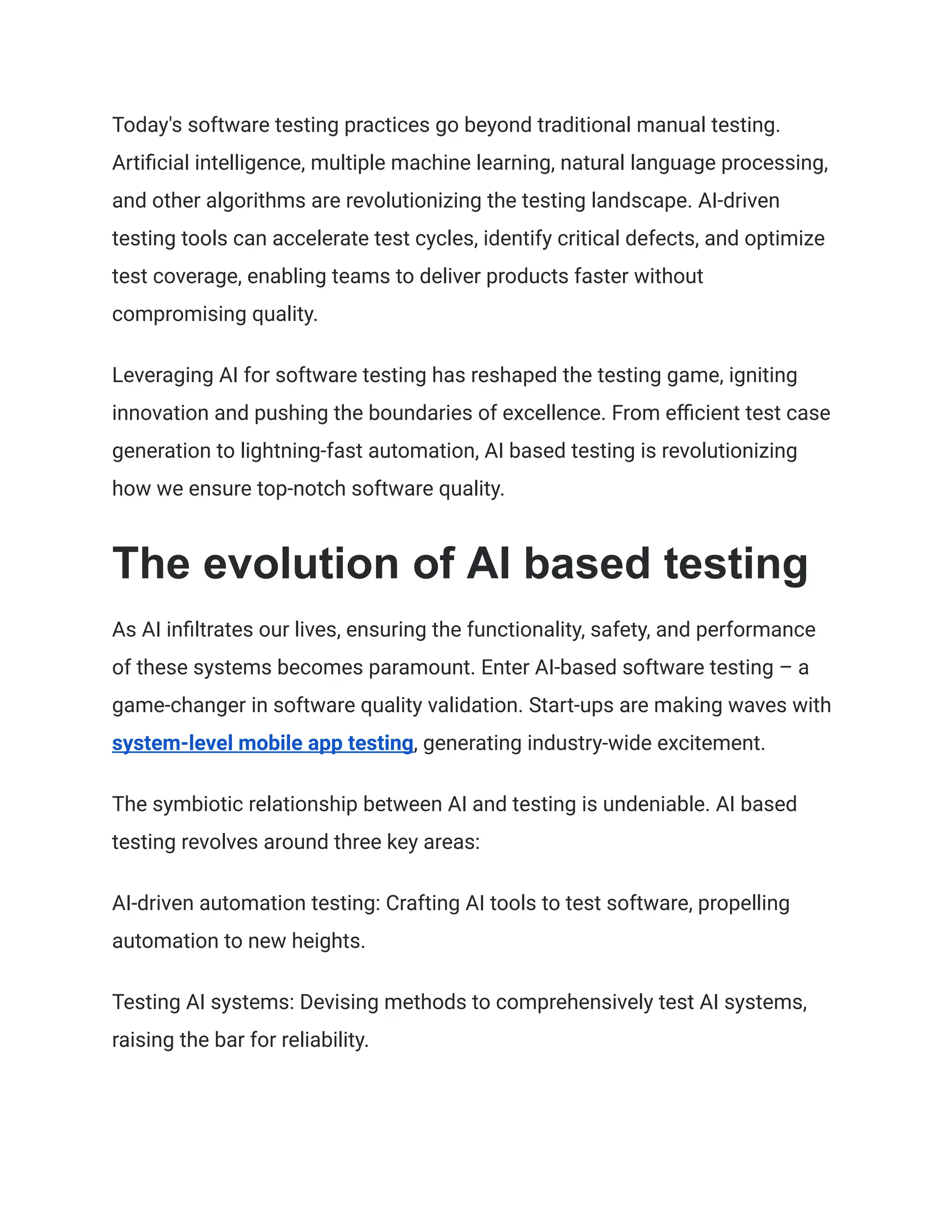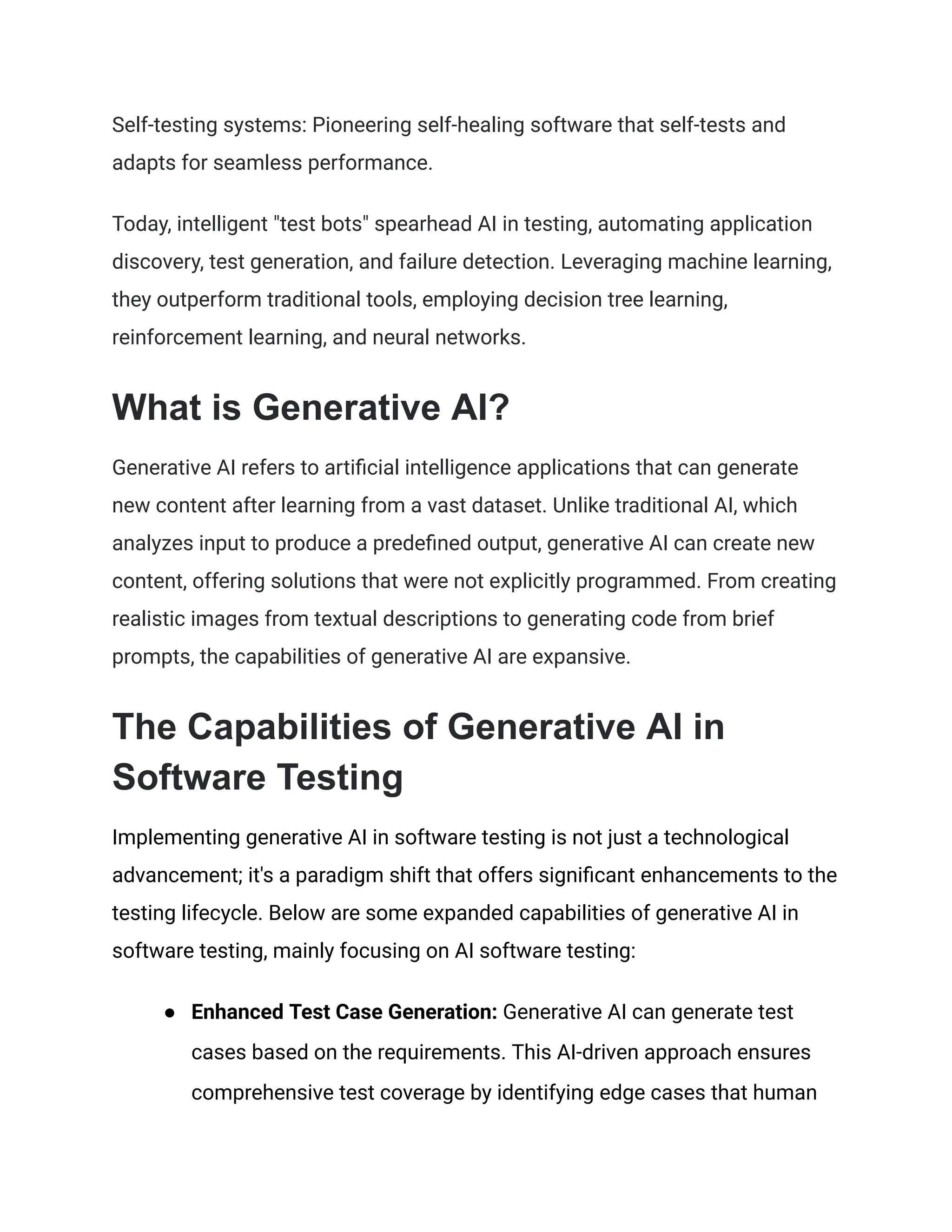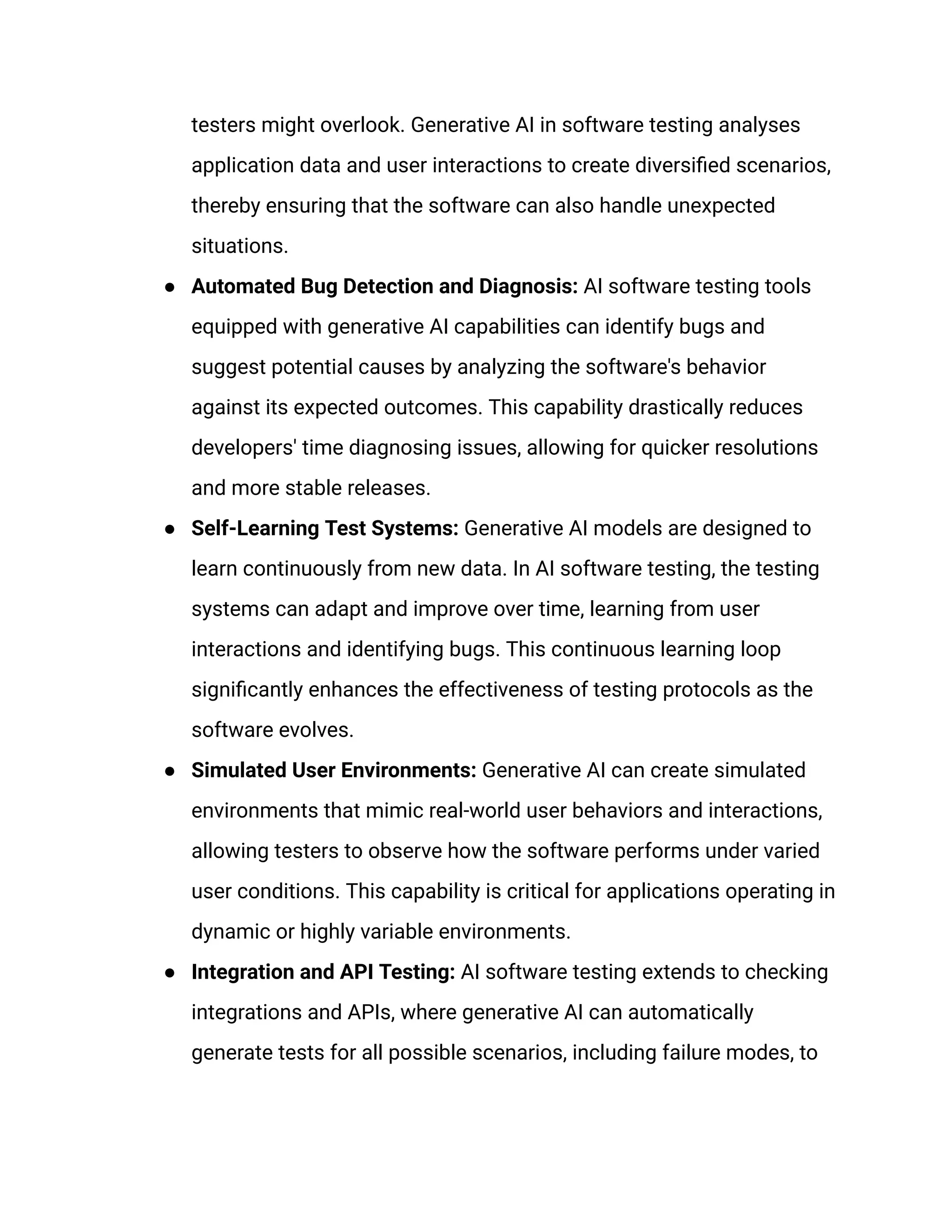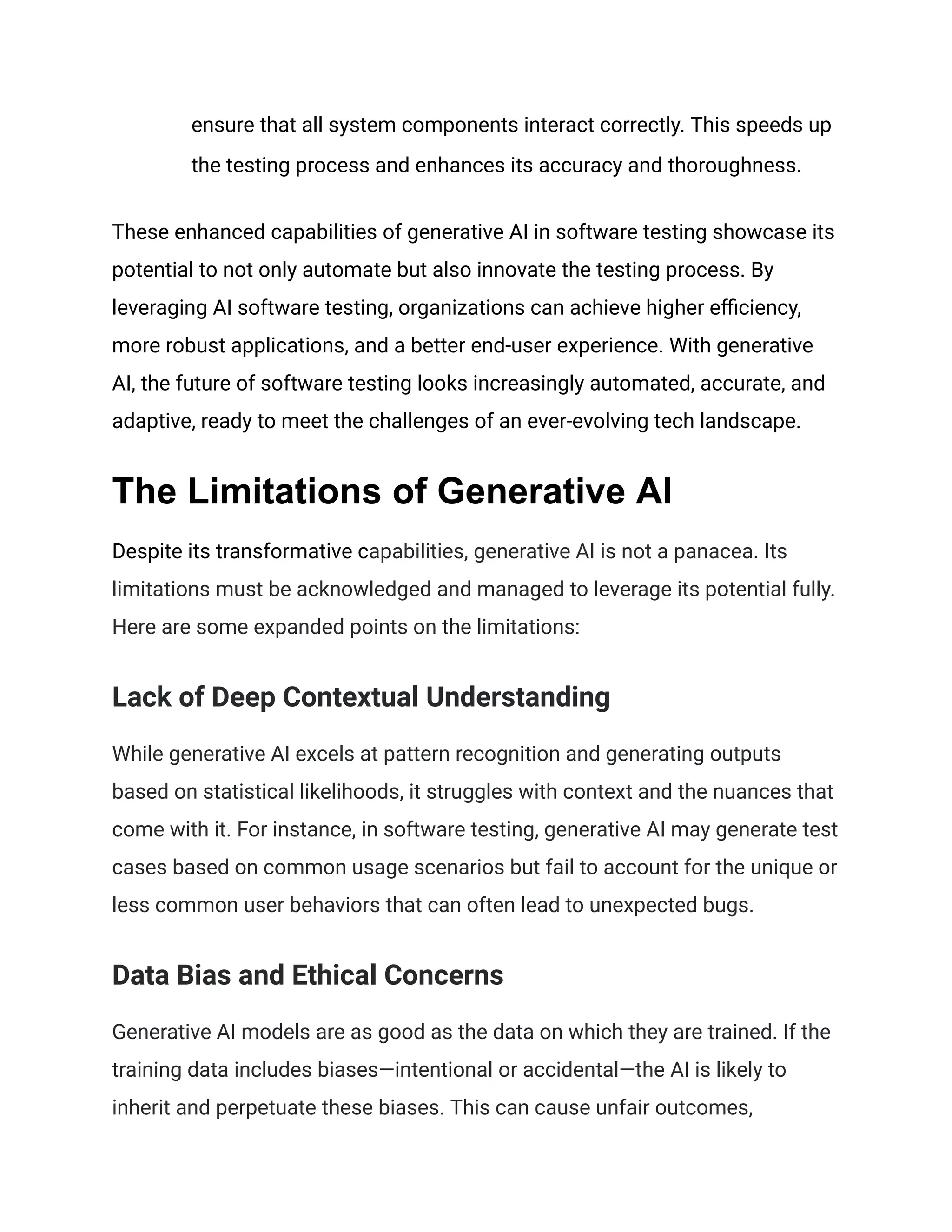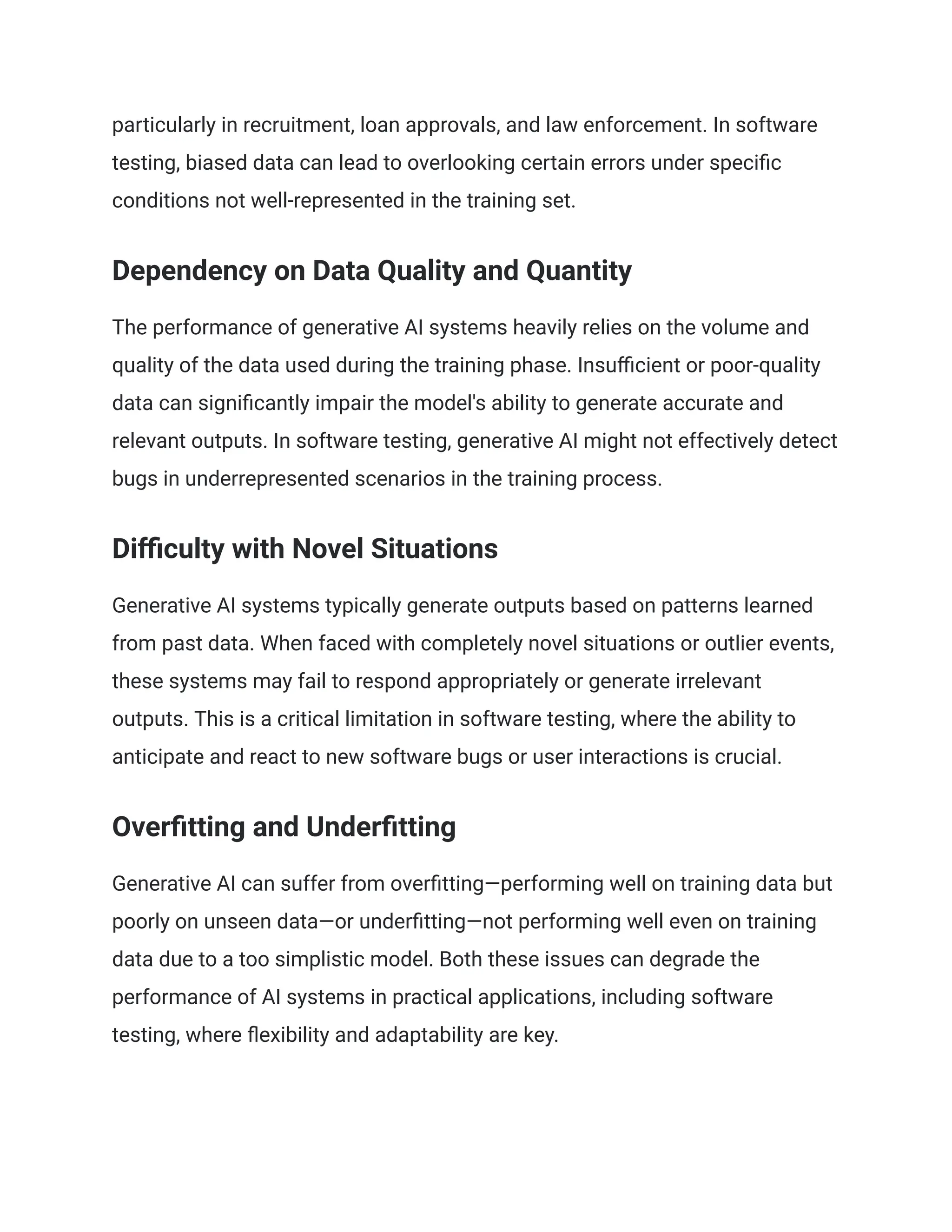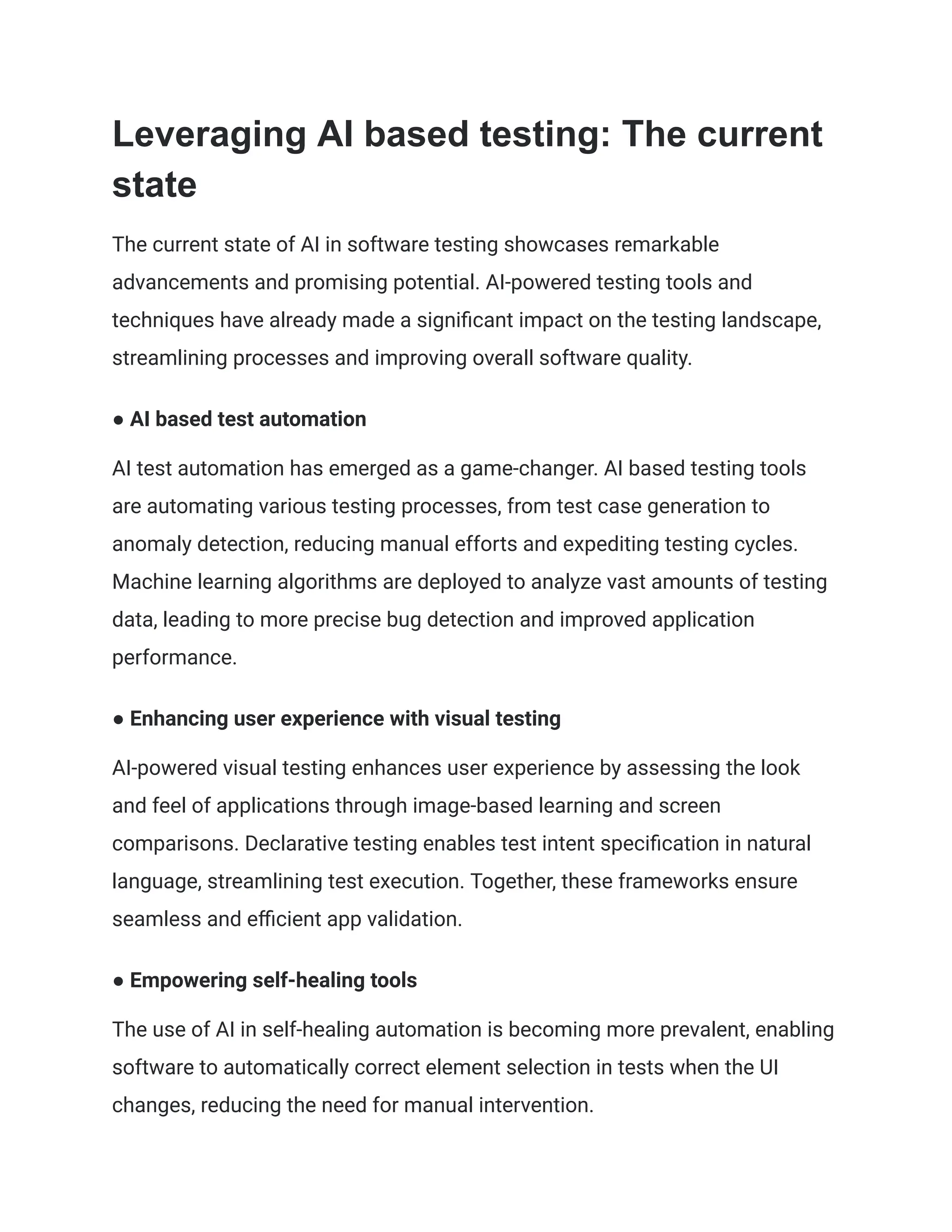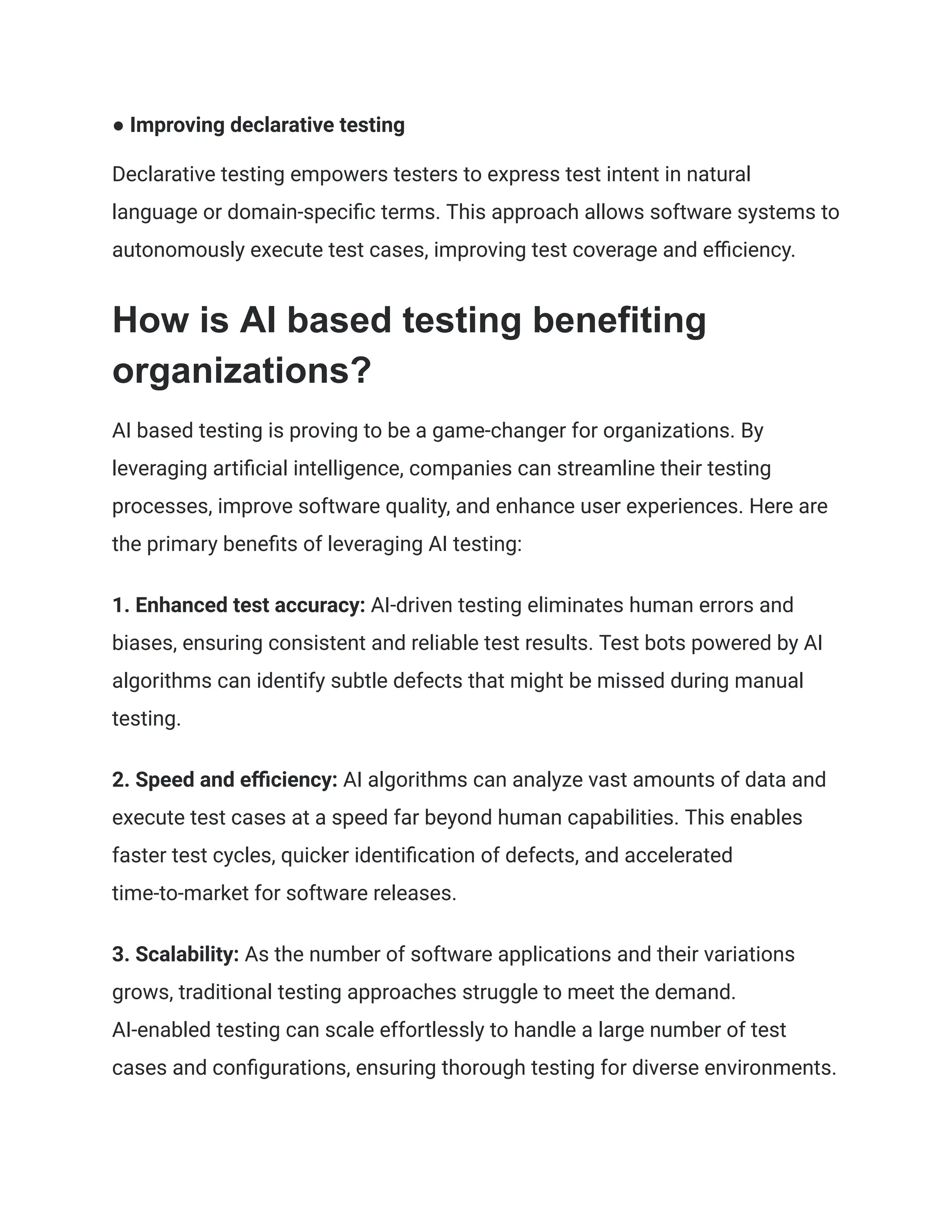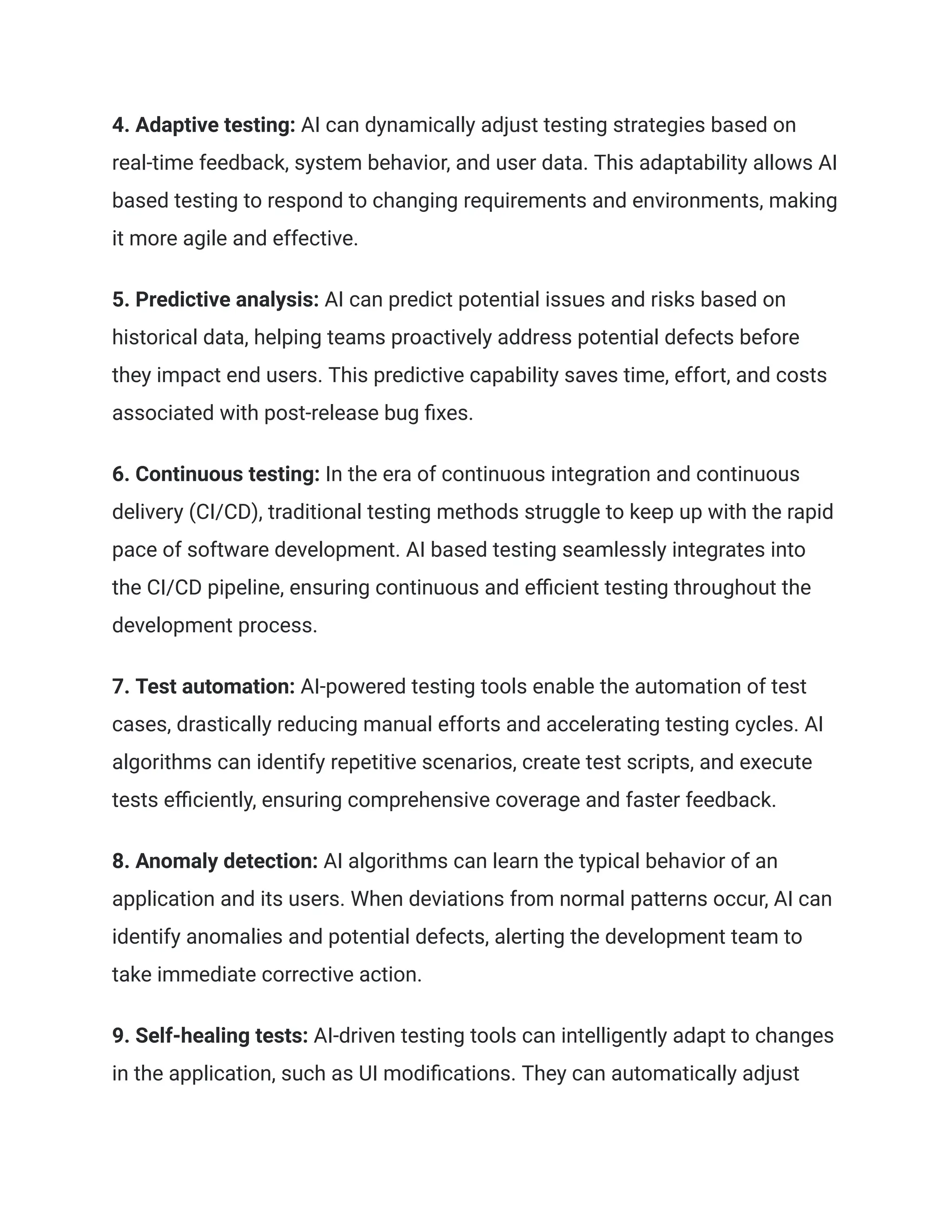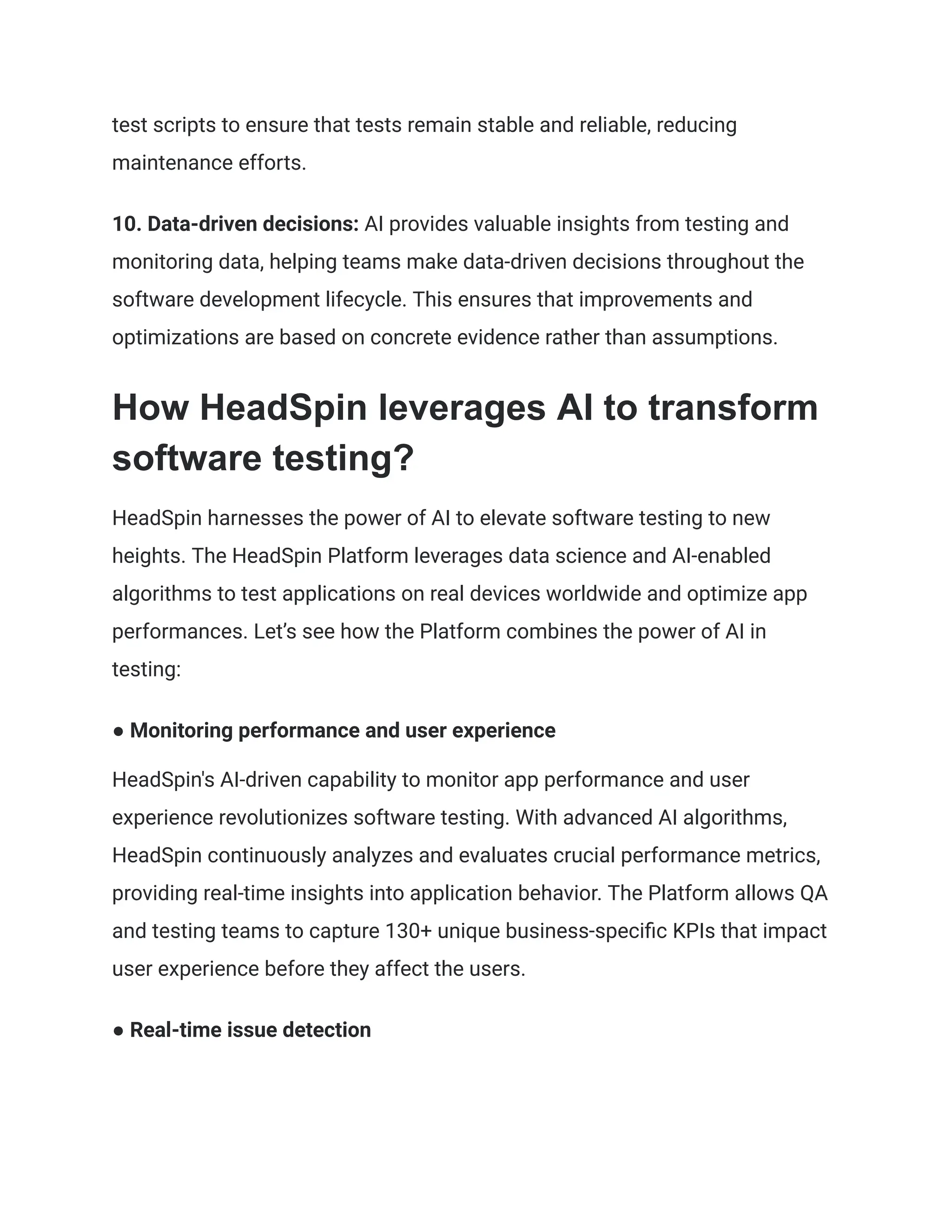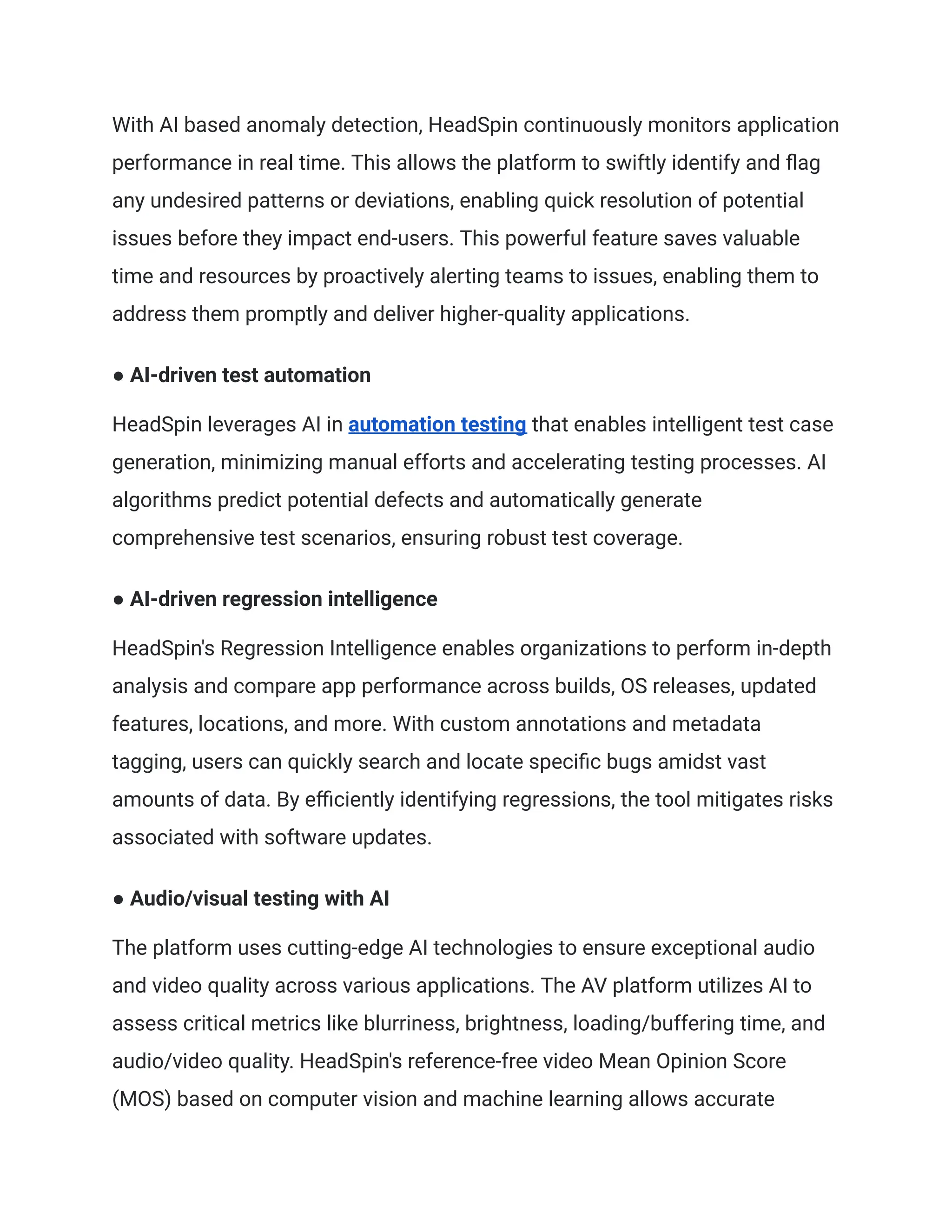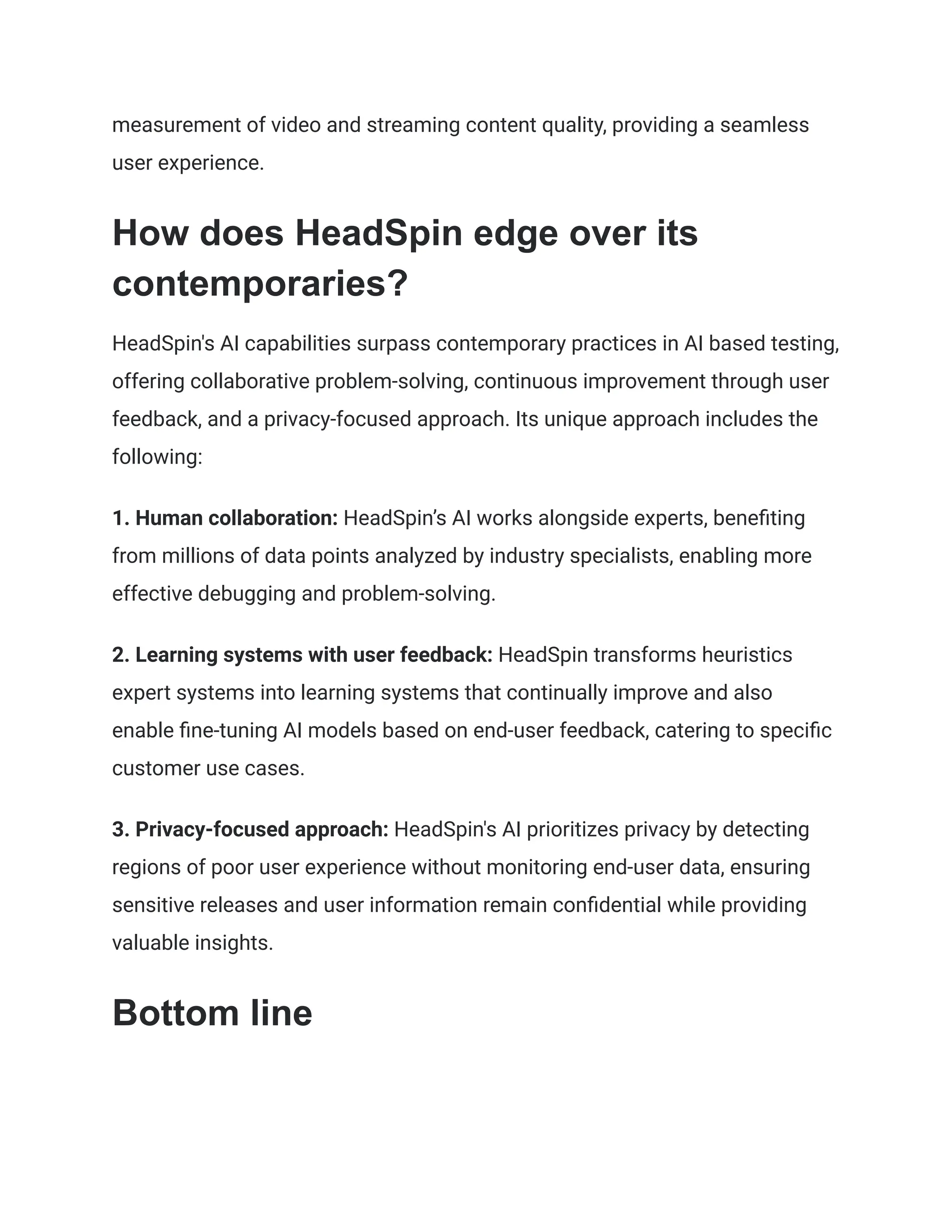The document discusses the evolution and impact of artificial intelligence (AI) in software testing, highlighting its potential to revolutionize the testing process through automation, enhanced accuracy, and efficiency. It details how AI, particularly generative AI, improves test case generation, bug detection, and adaptability in real-time user environments, while also addressing its limitations such as context understanding and data bias. The role of AI, specifically through platforms like Headspin, is emphasized as they enhance performance monitoring, issue detection, and overall user experience in software applications.
